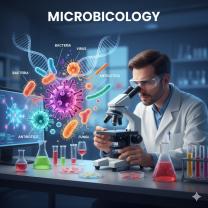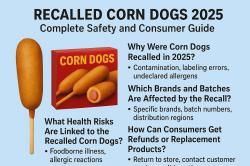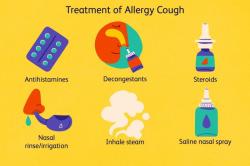What are facts about breast cancer?
Breast cancer is a complex disease, but understanding some fundamental facts can empower individuals to prioritize their breast health and seek timely medical attention.
1. Prevalence and Impact:
- Common among women: Aside from skin cancer, breast cancer is the most common cancer among American women.
- Significant diagnoses: In 2025, an estimated 316,950 women and 2,800 men will be diagnosed with invasive breast cancer in the U.S.
- Lifetime risk: The average risk of a woman in the United States developing breast cancer in her lifetime is about 1 in 8 (approximately 13%).
- Leading cause of cancer death in women: Breast cancer is the second leading cause of cancer death among women, only after lung cancer.
- Male breast cancer: While rare, men can also develop breast cancer, with a lifetime risk of about 1 in 1,000.
2. Risk Factors (and what you can/cannot change):
Unchangeable Risk Factors:
- Being female: Women are much more likely than men to get breast cancer.
- Increasing age: The risk of breast cancer increases significantly with age; most cases are diagnosed in women 50 or older.
- Genetics: Inherited gene mutations, particularly in BRCA1 and BRCA2, significantly increase risk.
However, most people diagnosed with breast cancer do not have a family history of the disease. - Family history: Having a mother, sister, or daughter with breast cancer almost doubles a woman's risk.
- Personal history: If you've had breast cancer in one breast, your risk of developing it in the other breast is increased.
Certain non-cancerous breast conditions (like atypical hyperplasia or lobular carcinoma in situ) also increase risk. - Dense breast tissue: This can make it harder to detect cancer on mammograms and is also an independent risk factor.
- Reproductive history: Starting periods early (before age 12) or menopause late (after 55) exposes women to hormones for longer, raising risk. Never having a full-term pregnancy or having a first child after age 30 can also increase risk.
- Previous radiation therapy to the chest: Especially before age 30.
- Being female: Women are much more likely than men to get breast cancer.
Changeable (Lifestyle) Risk Factors:
- Physical inactivity: Lack of physical activity increases risk.
- Overweight or obesity: Especially after menopause.
- Alcohol consumption: The more alcohol consumed, the higher the risk.
- Hormone therapy: Some forms of hormone replacement therapy (those combining estrogen and progesterone) taken during menopause can increase risk, especially if taken for more than 5 years.
Certain oral contraceptives may also slightly increase risk. - Breastfeeding: Breastfeeding may offer a small protective benefit.
- Physical inactivity: Lack of physical activity increases risk.
3. Types of Breast Cancer:
Breast cancers are categorized based on where they originate and their biological characteristics:
- Ductal Carcinoma In Situ (DCIS): Non-invasive cancer where abnormal cells are confined to the milk ducts and have not spread.
It's sometimes called "stage 0." - Invasive Ductal Carcinoma (IDC): The most common type (70-80% of cases), where cancer starts in the milk ducts and has spread into the surrounding breast tissue.
It can also spread to lymph nodes or other parts of the body. - Invasive Lobular Carcinoma (ILC): The second most common type (10-15% of cases), starting in the milk-producing glands (lobules) and spreading to surrounding tissue.
It often doesn't form a distinct lump and can be harder to detect on mammograms. - Triple-Negative Breast Cancer (TNBC): An aggressive type where cancer cells lack receptors for estrogen, progesterone, and HER2 protein. It's harder to treat with hormone therapy or HER2-targeted drugs. It's more common in Black women.
- HER2-positive Breast Cancer: Cancer cells have too much of the HER2 protein, which promotes growth.
While aggressive, it responds well to targeted therapies. - Inflammatory Breast Cancer (IBC): A rare and aggressive type that often doesn't present as a lump. Instead, the breast may appear red, swollen, warm, itchy, and dimpled (like an orange peel) due to cancer cells blocking lymph vessels.
- Paget's Disease of the Breast: A rare cancer starting in the nipple ducts and spreading to the nipple and areola, causing scaly, itchy, or reddened skin.
4. Symptoms and Early Detection:
- Common Symptoms: While a lump is the most well-known symptom, others include:
- Thickening or swelling of part of the breast.
- Changes in the size or shape of the breast.
- Skin irritation or dimpling.
- Redness or flaky skin in the nipple area or breast.
- Pulling in of the nipple (nipple retraction) or nipple pain.
- Nipple discharge other than breast milk (including blood).
- A new lump in the underarm (armpit).
- Pain in any area of the breast (though breast pain alone is rarely a symptom of breast cancer).
- Thickening or swelling of part of the breast.
- Importance of Self-Awareness: Being familiar with how your breasts normally look and feel can help you notice any changes and report them to a doctor promptly.
- Mammograms are crucial: Mammograms are the best way to find breast cancer early, often years before a lump can be felt.
Early detection significantly improves survival rates (the 5-year survival rate for localized breast cancer is 99%). - Screening guidelines:
- Average risk women: The American Cancer Society recommends women between 40 and 44 have the option to start annual mammograms.
Women aged 45 to 54 should get yearly mammograms. Women 55 and older can switch to mammograms every other year or continue yearly. - High-risk women: Those with a strong family history, certain genetic mutations (like BRCA1/2), or a history of radiation therapy to the chest before age 30 may need earlier and more frequent screening, possibly including MRI in addition to mammograms.
- Average risk women: The American Cancer Society recommends women between 40 and 44 have the option to start annual mammograms.
- Other diagnostic tools: Clinical breast exams by a healthcare professional, ultrasound, and MRI may be used in conjunction with mammograms, especially for those with dense breasts or high risk.
A biopsy is typically performed to confirm a diagnosis.
5. Treatment and Survivorship:
- Personalized treatment: Different breast cancers are treated differently based on their type, stage, and other characteristics.
- Treatment options: May include surgery (lumpectomy or mastectomy), radiation therapy, chemotherapy, hormone therapy, targeted therapy, and immunotherapy.
- Improved outcomes: Due to earlier detection and advancements in treatment, breast cancer death rates have been steadily decreasing, and there are over 4 million breast cancer survivors in the United States.
What are some factual details about breast cancer that everyone should know?
Here are some key facts and information about breast cancer to help raise awareness and understanding:
General Facts
Most Common Cancer in Women Worldwide
Breast cancer is the most commonly diagnosed cancer among women globally and the second leading cause of cancer death in women (after lung cancer).Men Can Get It Too
While rare, about 1 in 100 breast cancer cases occur in men.Early Detection Saves Lives
When detected early and in the localized stage, the 5-year relative survival rate is around 99%.
Risk Factors
Age
Most breast cancers are diagnosed in women over age 50.Family History and Genetics
Inherited mutations in genes like BRCA1 and BRCA2 significantly increase risk.Lifestyle Factors
Lack of physical activity
Obesity or being overweight
Alcohol consumption
Hormone replacement therapy (HRT)
Signs and Symptoms
A lump or mass in the breast or underarm
Changes in breast size or shape
Nipple discharge (especially bloody)
Dimpling or puckering of the skin
Redness or scaliness of the nipple or breast skin
Not all lumps are cancerous, but any new or unusual change should be evaluated by a doctor.
Screening and Diagnosis
Mammograms are the gold standard for early detection.
Clinical breast exams and self-awareness are also important.
Diagnostic tools may include ultrasound, MRI, or biopsy.
Treatment Options
Surgery (lumpectomy, mastectomy)
Radiation therapy
Chemotherapy
Hormone therapy
Targeted therapy (e.g., HER2-targeted drugs)
Immunotherapy (in certain cases)
Prevention and Risk Reduction
Maintain a healthy weight
Exercise regularly
Limit alcohol
Discuss genetic testing if high risk
Consider medications or preventive surgery for those with very high genetic risk
Awareness Matters
October is Breast Cancer Awareness Month, but education and support are important year-round. Awareness helps promote:
Early detection
Screening
Research funding
Support for patients and families













